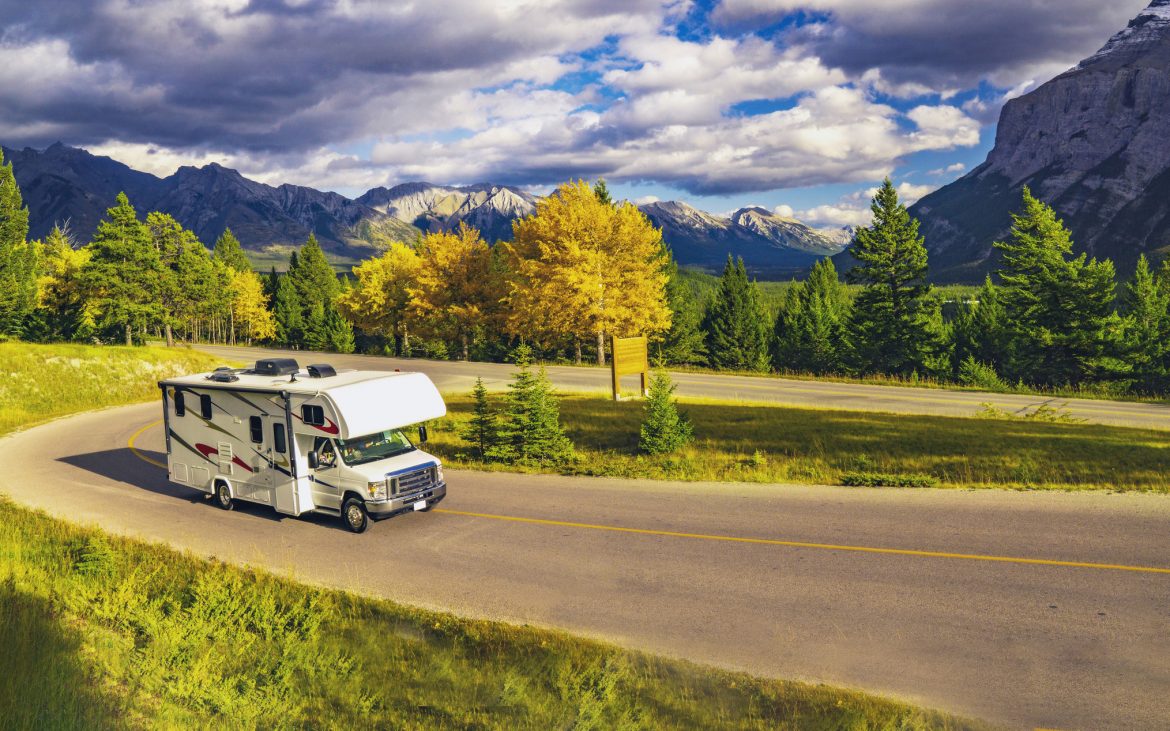If you are anxious to hit the road with your RV, you are not alone. Many RVers will be striking out this season for long trips across North America, in some cases traveling thousands of miles. Most people don’t necessarily check the tire pressures for the average day trip, for example, although it is highly recommended. But for trekkers that are setting out on a long journey covering many miles and encompassing long days of driving, the pre-departure tasks should not be missed.
Let’s look at some of these must-do items.
Before Departure
Photo: Peter Mercer
Check all fluid levels, including the coolant level. Do these with a cold engine with the exception of the transmission fluid level. Transmission fluid must be checked at operating temperatures. For Allison transmissions equipped with electronic fluid level status, use this feature, as it is more accurate than the dipstick method. Depressing the “Up” and “Down” shift arrow buttons simultaneously while idling in neutral will display the fluid level status.
Photo: Peter Mercer
Check external lights. As often long daily runs can extend into the night, this initial verification is a prudent step. Visually confirm all running, clearance and turn indicators lights are functioning, including the tow vehicle’s lights, if applicable.
Check tire pressures and adjust as specified for the current vehicle weight configuration. This should be done during the cool of the day with the tires cold.
Set up your GPS for the trip. Hopefully, you have recently updated the GPS software, which might aid in avoiding current road construction or repairs taking place on your route. Configuring your fuel management computer, if equipped, can be a great help in determining fuel stop locations along the route. In addition, monitoring fuel performance readouts generally promote driving behavior that supports attaining higher fuel mileage savings.
Okay, everything checks out and is ready to go. Now let’s look at ways while you travel to help reduce the chances of developing issues while on the road.
On The Road Travel for Long Trips Across North America
Summer Road Trip In RV Motorhome in Estes Park, Colorado. Getty Images
Do not turn off the engine immediately upon pulling off the road into a rest stop. Allow it to idle in neutral for a couple of minutes to transfer the heat and cool. If it is a very hot day or after a hard climb, increase the neutral idle speed to 1,000/1,100 rpm to increase the cooling circulation. This can be done by applying light pressure to the accelerator or, if equipped with a “Smart Wheel,” can be set via the cruise control buttons. Either way, be sure to idle down briefly before turning off the engine. This is especially important for turbocharged units.
Carry a door key in your pocket. With many vehicles having external keypad lock entry, people often carry no keys. Should an electrical failure occur rendering the electronic lock inoperative, the owner may find themselves locked out.
Do a walk around while parked. It will not only give you the opportunity to stretch your legs, but it will also allow you to visually check the RV and towed vehicle, if applicable.
Infrared temperature gun. Photo: Peter Mercer
Check the tire and bearing temperatures. Using an infra-red temperature gun, take sample readings from axle hubs and tire casings. If one is far different from the others or out of a known normal temperature window, investigate why and correct if possible.
Recheck a towed vehicle’s connecting pins, locks, and related hardware just prior to heading back out on the road. Some vandals have been known to tamper with these for reasons unknown. I should know, as I had one pull a pin that I did not discover until I was traveling at 60 mph. My Jeep was hanging by one arm of the tow bar. Observing the backup monitor, I had to get to a grade to allow me to slow to a stop without having the towed vehicle hit the rear of my motor home. I had to disconnect the Jeep and go and find a replacement pin. I now carry two spares should such an incident reoccur.
Lock your RV with the keyed deadbolt, if so equipped, if you are leaving to shop, dine or leave the vehicle unattended. Class A coach makers use very few lock variations, perhaps a dozen or less. That means other people may have a key that will unlock your door. However, the deadbolt uses secure locks similar to that of a home.
Well, following some of these tips might help you to avoid those “Oops!” or “Oh No!” events that have happened over the years of RV travel.
Even though being on the road with your RV is great fun, remember to take a break from driving to stay refreshed.
Yeah, it sure feels great to be RVing again.
Peter Mercer — As The RVs Emerge From Hibernation
